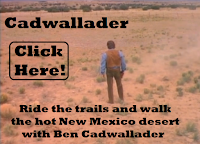After producer John Mantley and star James Arness trekked the frontier in the epic series How the West Was Won, it was time to ride familiar western territory once more.
Return to Dodge
Twelve years after Gunsmoke’s unanticipated and unceremonious cancellation, CBS produced Return to Dodge, a reunion and sequel to 1969’s darkly dramatic story “Mannon.”
Steve Forrest reprises his dastardly role of the slick and cunning Will Mannon, whose twisted games include abusing the Long Branch Saloon’s Kitty Russell (Amanda Blake) and holding her as bait for Matt, whose gun many believe Mannon can easily outdraw.
Now a prison parolee, Mannon hunts first the judge who passed sentence on him and then the former marshal who brought him to justice. Before setting out to kill Matt, Mannon targets Kitty who has returned to Dodge City upon learning that Matt has recently been injured.
Earl Holliman, in an exuberant performance, plays an escapee named Jake, rushing to warn Matt of Mannon and running from a cavalry lieutenant who believes Jake to be the judge’s killer. This supporting role always feels as though it had been initially written for Dennis Weaver or Ken Curtis, neither of whom were available or willing to reprise their respective Gunsmoke characters.
Overall, Return to Dodge moderately recaptures the spirit of the long-running show it is based upon despite its outdoor scenes, shot in Canada, that don’t pass for the Midwest Plains.
Many have also noted Arness’s “waxy” look, an apparently failed cosmetic attempt to make the veteran actor resemble his former self.
If there is something that does succeed in Return to Dodge, it’s the final opportunity to see Matt and Kitty together. Familiar faces Newly O’Brien (Buck Taylor) and Miss Hannah (Fran Ryan) are also on hand.
From there on, however, Gunsmoke’s Dodge City would never be depicted again and notwithstanding his horse, Matt would henceforth be on his own.
The Last Apache
Just as “Mannon” provided the narrative foundation for Return to Dodge, so did “Matt’s Love Story” for The Last Apache. A ‘Matt only’ episode from 1973, the story was a clever device for Gunsmoke’s writers, eager to give Matt Dillon a romantic situation without blatantly violating his relationship with Kitty.Suffering from a case of amnesia after being wounded in the desert, Matt is nursed back to health by a homestead widow named Mike (Michael Learned). Eventually, Matt falls in love, oblivious to the life he has temporarily abandoned. But in the end, he regains his memory and in a bittersweet scene, tells Mike he must turn back— The End (or so we thought).
Now, 17 years on, with Kitty out of the picture, the producers were free to follow up on the Matt and Mike relationship, despite the ire of many a devoted Gunsmoke fan.
As he learns he is the father of Mike’s daughter, Beth (Amy Stoch), the now-grown child is abducted by an Apache renegade named Wolf. Soon Matt, Mike and their friend, army scout Chalk (Richard Kiley) are in hot pursuit.
Dillon then butts heads with stubborn army officers intent on hanging two of Geronimo’s young Apaches and is jailed after his request to set up a trade is refused.
After Mike breaks him out, he frees the Apache boys and takes off in search of Wolf who has held Beth at the Apache camp to take as a wife.
One considerable issue with this premise is its time frame of 1886 (the Apache surrender). Followers of the series may have noticed that the events on Gunsmoke took place after the Civil War. That being the case, if ‘Matt’s Love Story’ occurred in the 1880s, then these events should have occurred within the first part of the 20th Century— or Beth would never have aged!
Another issue regards Matt’s character in general. Despite the involvement of some of the show’s original creative team, the resourceful, diplomatic Matt Dillon we remember has evolved into a gritty and headstrong ‘Dirty Harry’ type.
“That Apache brave... if he’s harmed my daughter, I aim to kill him.”
He’s only been aware of having a daughter for a matter of hours and already become one of the very overbearing and irascible prairie dads he had to talk sense into so many times throughout the series.
In fact, after this film there would be little resemblance to anything on the series, this being the final story based on a Gunsmoke episode. The saga would subsequently see Matt and Beth as a rambling father and daughter team with Arness continuing his impressive run as Dillon into a fifth decade!
Michael Learned, reprising her guest role, epitomizes the western heroine remarkably. Her combination of tough-hewn spirit and relaxed beauty seem ideal if so many other factors in The Last Apache may not.
The casting of Richard Kiley has some poignancy, too, as he had starred in his own episode titled, astonishingly enough, “Kitty’s Love Affair” - bringing us to a final bit of irony.
All of this was ultimately dedicated to one Amanda Blake, the actress who, for 19 years, portrayed Kitty Russell— the woman in Matt’s life who patiently endured the disappointments and sacrifices that came with his badge and kept them from riding off together to start a new life... In that regard, it’s not exactly the most complimentary of tributes but you take what you can get.
Return to Dodge and The Last Apache are available on DVD and can be seen currently on INSP Network.
About the Author
Western Magazine Digest Senior Editor Christopher Robinson is a writer, filmmaker and musician in New Jersey who has contributed to several magazines and websites.
Robinson also worked as a cameraman, videographer, cable access TV host, teacher and producer. He scripted and produced commercial videos as well as cable television programs for local consumption.
For more info about Christopher, click here.
Be sure to visit THE TV WESTERN AND MOVIE FAN PAGE on Facebook!


























